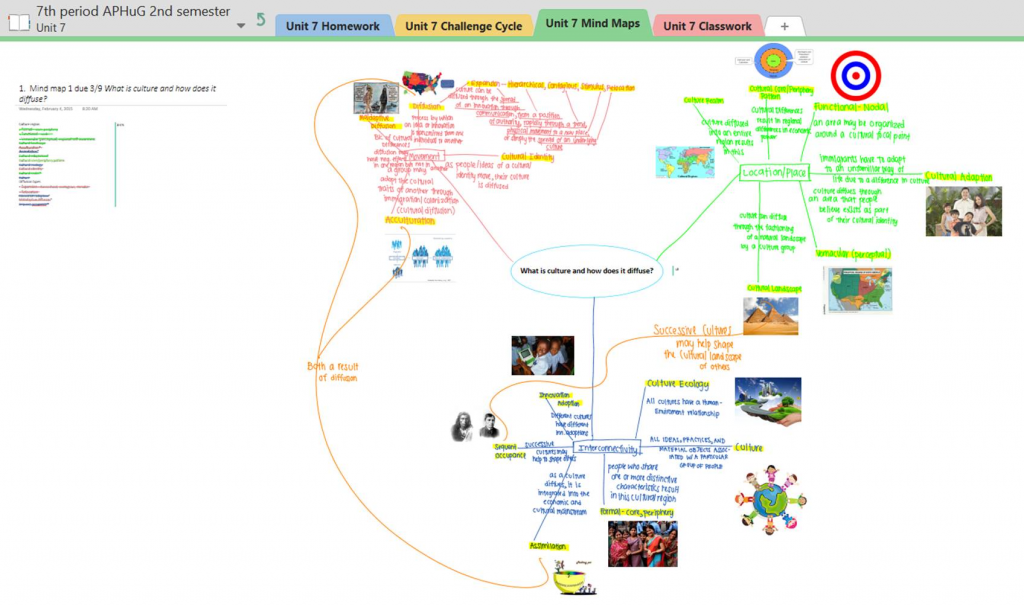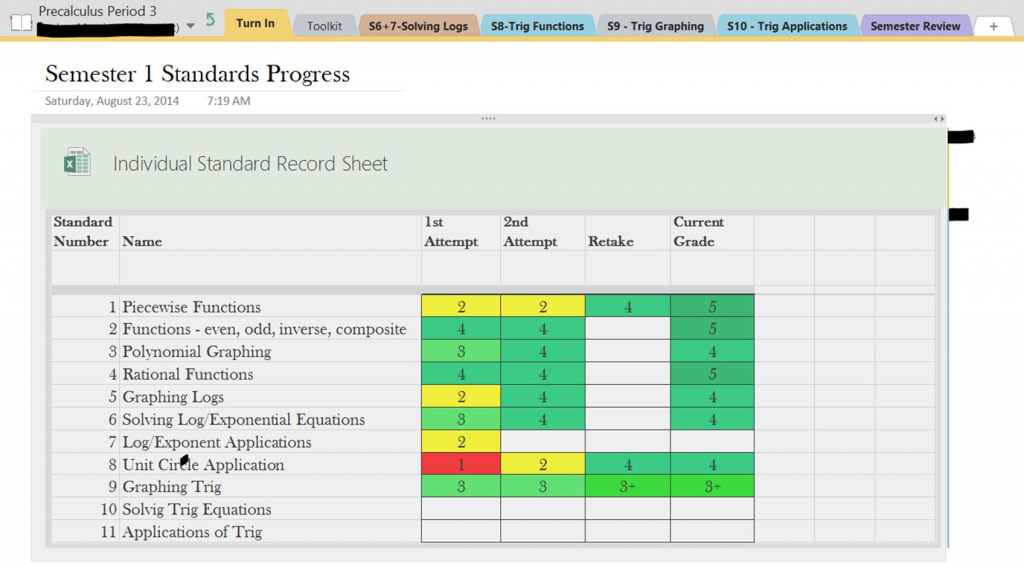Sammamish High School—six months of OneNote Class Notebooks
adopted from https://www.microsoft.com/en-us/microsoft-365/blog/2015/03/19/sammamish-high-school-six-months-of-onenote-class-notebooks/
Today’s post was written by Bill Palmer, Ed.D, curriculum developer at Sammamish High School (Bellevue School District, WA).
Sammamish High School is a public, neighborhood high school serving 950 students in a diverse suburb of Seattle. Our students come from 53 different countries and speak 42 different languages. Sammamish prides itself on having a collaborative approach to problem-solving, a commitment to teacher leadership, and a focus on college and career readiness for all students. Over the last five years, we have been shifting to a problem-based learning (PBL) in every content area (for more information about PBL check out this case study).
On the second day of school we distributed laptops with digital ink capacity to all of our students. Within a few weeks we canceled all orders of paper for the copy machines.
We’re now six months into using laptops and OneNote Class Notebooks and this is what teaching and learning looks like:
We asked student focus groups about the difference the 1:1 laptop program has made in their learning. What surprised us was how predominantly OneNote was featured in all of their responses:
Working on OneNote allows me to catch up on anything that I may have missed in a class by checking the Content Library. —
I really like the ability to handwrite notes and having them saved in a place where I can find them easily. Having digital notes makes it that much easier to organize and retrieve them later—
If we didn’t have OneNote Class Notebooks I’d probably be failing all my classes. It’s so much easier to find my assignments and make sure the teacher sees my work. —
Using OneNote means that I get feedback from teachers more quickly than ever before, which allows me to get the help I need before big test and quizzes. —
When teachers share materials in OneNote, it means I don’t have to copy all the notes down—
The Collaboration Space in OneNote makes it possible for us to work on our group projects anywhere, anytime. Before this year we would be stuck if one group member lost the memory stick. —
Teachers are starting to reflect on how their own practices have changed as a result of using the OneNote Class Notebooks. What excites me most about the implementation of OneNote Class Notebooks is how it changes the dynamics of feedback in our classrooms. Through classroom observations, student and teacher focus groups, and survey data we are seeing four emerging ways student learning benefits from real-time digital teacher and peer feedback:
- Receiving synchronous feedback (occurring in the same time period and medium) through OneNote dramatically shortens the learning cycle, giving students immediate opportunities to correct misconceptions or move ahead.
- Online collaboration in a PBL context allows teachers to give feedback on the process of collaboration, as well as more skillfully guide student group work before their final product is finished.
- Student work and growth over time can be organized and shared easily. OneNote has become a digital portfolio that shows both how students have improved and the feedback or interventions that led to learning.
- Students work is generally improved with an audience. Teachers are finding that the ability to see and provide input into student work during the class period has led to greater student engagement and reduced workload outside of the class period.
“The constant feedback provided to students as they are crafting their ideas and responses has not only prompted more students to participate in class through writing through increased accountability, but students frequently seek feedback as they have developed a sense that it will increase their understanding,” said Keith Onstot, science teacher, sharing his thoughts about providing real-time feedback through OneNote. “Interestingly, while piloting this technique, students began to request to have the teacher’s screen projected while providing feedback. Students who became stuck in class, would look at the feedback being provided to others in hopes of translating the same concept to improve their own response. This has fostered an environment where students frequently share their own feedback to small groups, further increasing accountability by not only being accountable to the teacher, but needing to participate fully to receive the best feedback possible to share with the peer group. Seeing participation levels rise, quality of written responses improve, and changing of student’s mindset on assessment from punitive to supportive have all emerged as possible consequences of implementing a routine of providing real-time feedback in class.”
Within a few weeks of the school year, almost all of our 79 teachers were using OneNote Class Notebooks to deliver and organize learning materials. A few months later para-educators were all using OneNote to provide individualized support to students. Six months into this year, our students tell us that they can’t imagine life without OneNote. I’ll be excited to share more about how our teaching and learning continues to transform as a result of PBL and OneNote. Thanks to the OneNote team and the work of educators like Rob Baker who pioneered teaching with OneNote.
—





